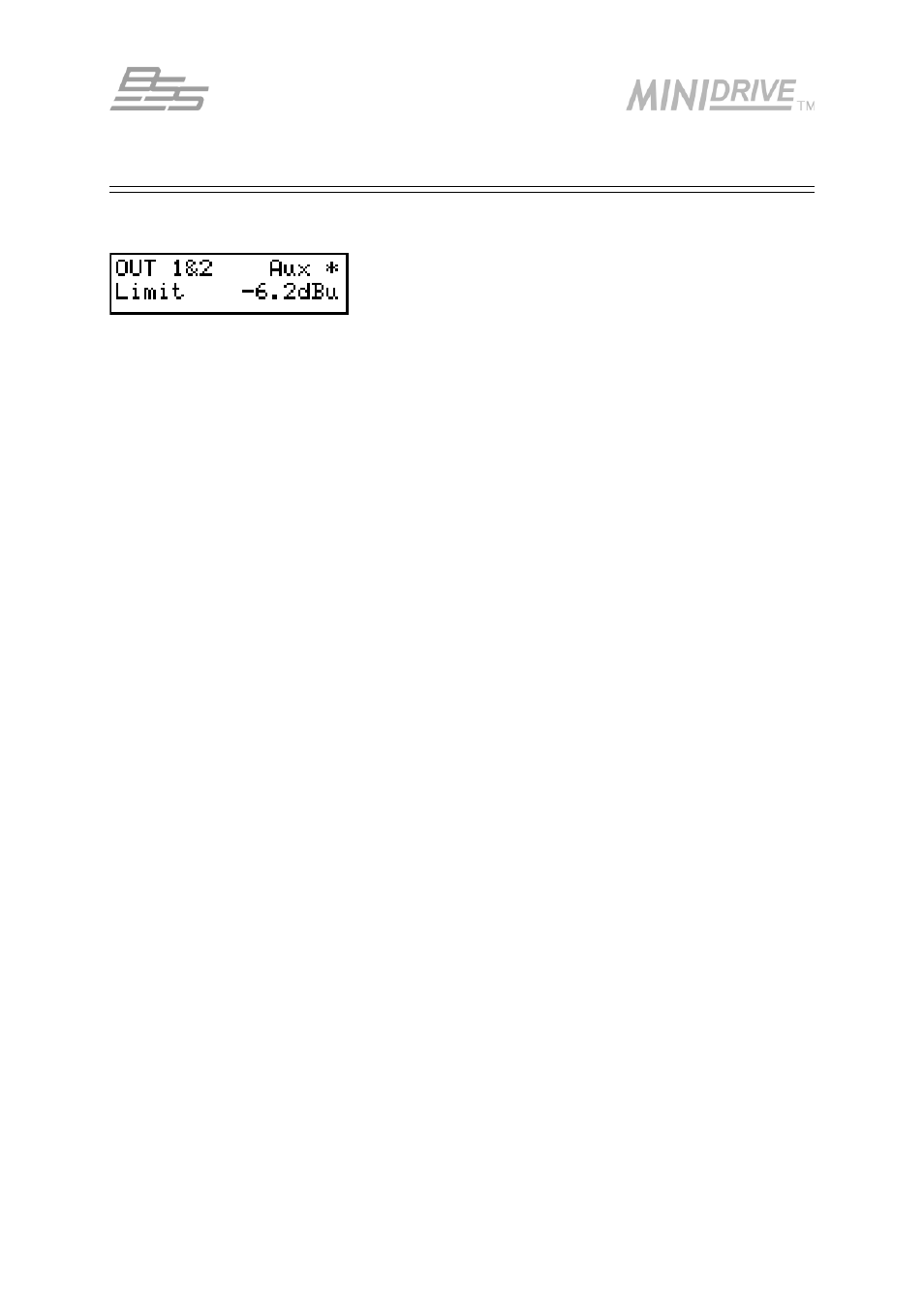BSS Audio FDS-334T Owner's Manual User Manual
Page 37

3 7
Limiter
Each Output channel has a dedicated 2 stage limiter that can be set to a threshold anywhere
between
-10 to +20dBu.
There are two primary uses for the limiters: One is for prevention of amplifier clipping and the
second is to limit the amount of power transmitted to the transducers. In applications where
systems are likely to be run at high volume levels for long periods of time, setting the correct
limiter threshold is important for the protection of the speaker drivers.
The value set in this screen is also the Output channel meter reference value. If the Limiter is
adjusted to say 2.0 dBu, then the Output meter for the selected channel will represent +2dBu at
LIMIT with the -3, -6, -12 and -20 dB reading relative to that level. i.e. -1dBu, -4dBu, -8dBu
and -18dBu.
Note that limiters are usually set slightly below the maximum settings.
Limiter Level Calculations
The method for setting the limiting threshold is given by the following equation:
Limiting Threshold (dBu) = Transducer voltage limit (dBu) - Amplifier gain (dB)
Example:
First, convert a speaker driver power rating into dBu. An example transducer has a continuous
power rating of 600 watts, with an impedance of 8 ohms, this corresponds to a voltage of:
Voltage =
Ö
(600 x 8) = 69.28 Volts
Expressing this in dBu:
20 log (69.28/0.775) = 39.03 dBu
Next find the amplifier gain from the published specification in the spec sheet or owners
manual. For example, we will use an amplifier which has 38dB of gain and use the formula:
Limiting threshold = 39dBu - 38dB = 1dBu
This would be the limiter threshold for 600 watts continuous output into the 8 ohm transducer.
Outputs
Limiter
